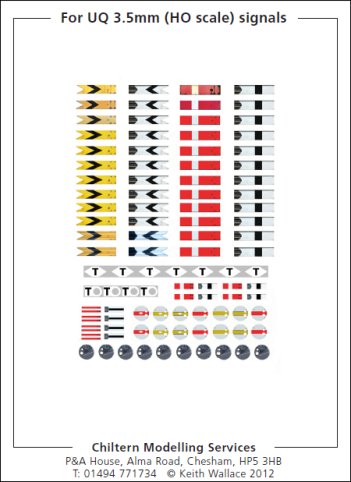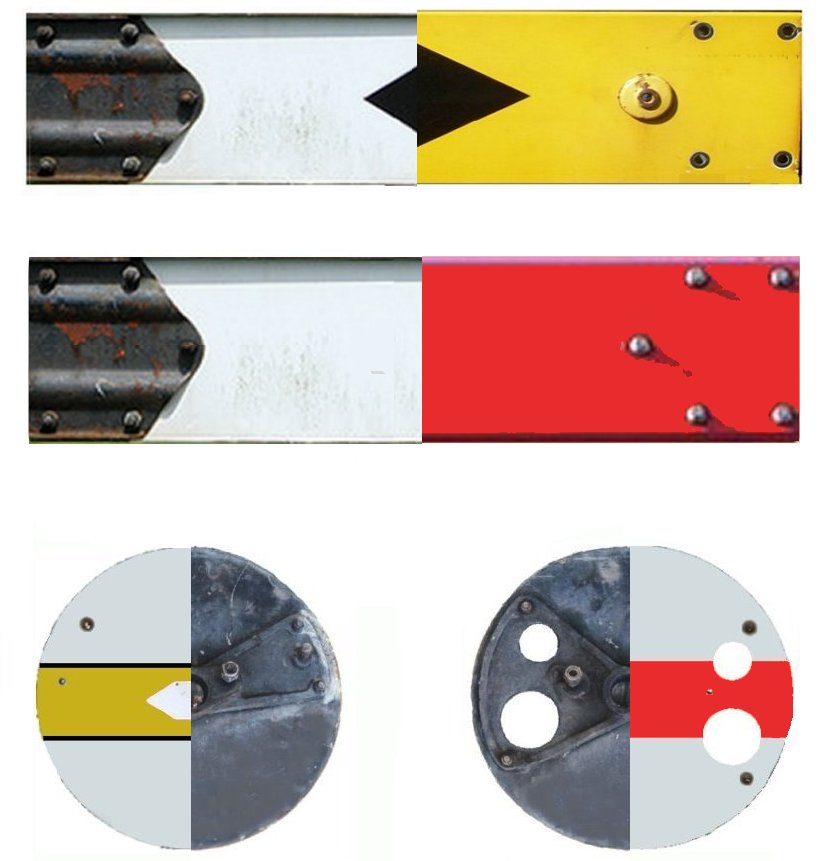
British Railway 3.5 mm HO scale Signal Waterslide Transfers (decals) for
BR/LMS Upper Quadrant etched and scratchbuilt arms
by Chiltern Modelling Services

Despatch & Postage Costs
This item will be despatched within 3 working days from receipt of payment, and postage free to UK and International addresses.
Order now whilst you are thinking how difficult it might be to mask off an effective chevron on BOTH sides of the arm! Save yourself hours of cussing and swearing!
We have produced a set of waterslide transfers for brass signal arms etches in 3.5 mm / HO scale.
They are invaluable for anyone having difficulty creating the chevrons on distant signals. They also feature the bolts that secure the arm, and as these transfers are created from actual photos.
A standard (unweathered) arm are is provided in multiple, together with a selection of weathered arms.
The brass arm needs to primed white (there is show through), and then gloss varnished (this allows the transfer to grip the surface). The transfer is then softened with a drop of water, and when loose, teased onto the arm with a cocktail stick or similar.
ONLY the front and back of the arm are featured - it is assumed the spectacle plate will be painted and glazed.
Payment via our secure shopping kart or PayPal - you can choose which you prefer once you have entered your details. Transfers will be posted as soon as I receive your payment.
What's on the sheet
The sheet contains 12 Home signals and backs, together with 12 distant signals. Two of the distants are the Anderson corrugated type used in the early years of the LMS. There is also a pair of the smaller shunting arms, and the similar sized calling on signals.
In addition there is a full set of disc signals: home, distant and distant with black horizontal lines. In addition there are also backs for these signals. This consists of a metal plate to which the spindle is attached, and the signal itself bolted to the front. There are two ways of adding the back - either cut a whole in the centre and feed it down the rod you have soldered to the MSE signal plate, or solder the rod to the plate, and cut the transfer in half, again with a semi-circle cut in the centre to fit round any solder.
Finally, there are transfers for the signal post plates as supplied on MSE fret DS312. I would suggest the best way to assemble the 'D' plate would be to paint the plate white and then cut out the letter 'T' and apply.

